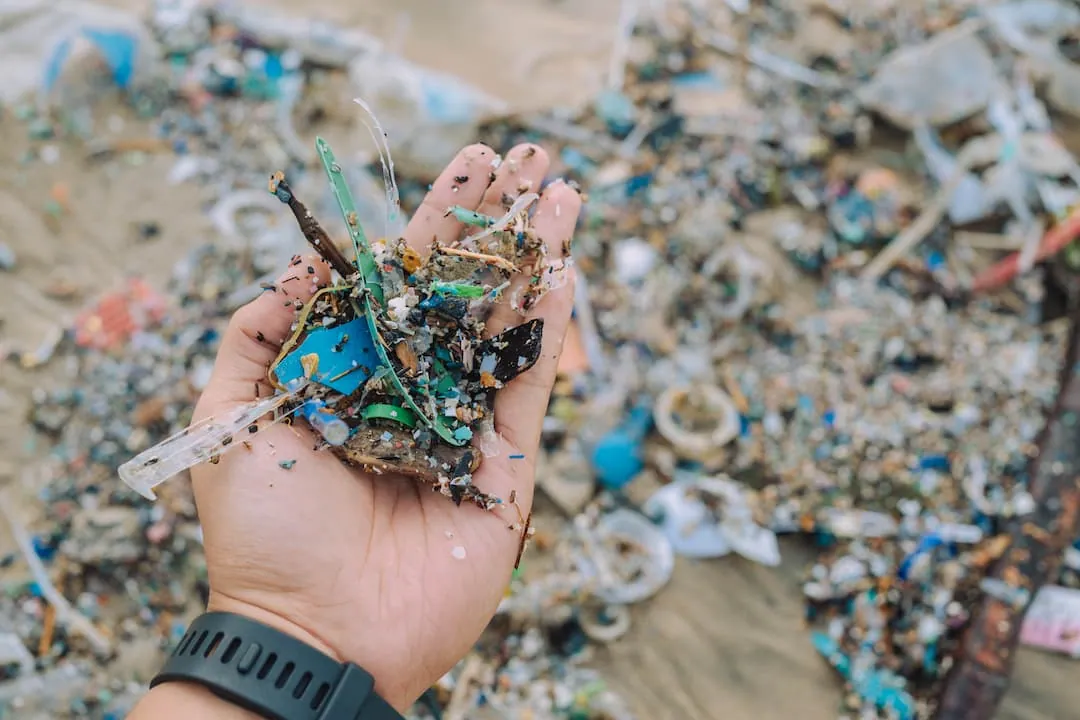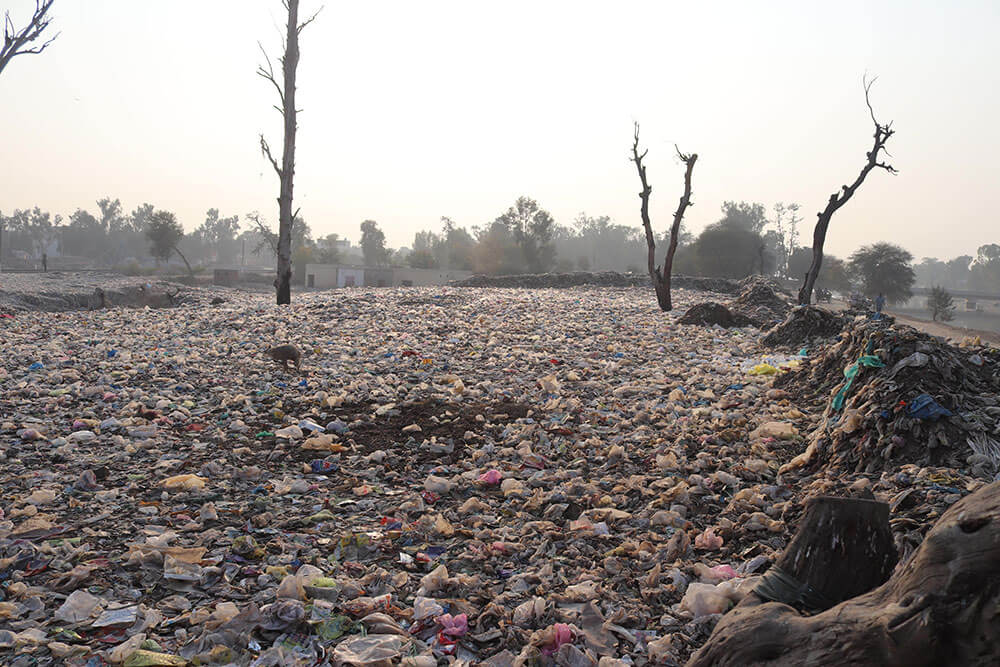 Plastic Pollution and Recycling
Plastic Pollution and Recycling

In an era where environmental consciousness is appreciated and expected, Consumer Packaged Goods (CPG) companies face increasing pressure to innovate in their plastic waste management practices. As a crucial component of corporate social responsibility, effective plastic waste management is not just about compliance or philanthropy but strategic advantage and profitability1. Here, we will explore actionable and profitable strategies for CPG businesses to manage their plastic waste, turning what may seem like a liability into a competitive edge.
Understanding the impact of plastic waste in the CPG industry
The CPG industry is one of the largest contributors to plastic waste due to the extensive use of plastic packaging to protect and preserve products. However, this reliance on plastic has significant environmental repercussions, as vast amounts of plastic waste end up in landfills and the ocean, causing pollution and harm to wildlife2. Moreover, consumer awareness and demand for sustainable practices are rising, pushing companies to rethink their plastic use and waste management strategies.
But what if we tell you that managing plastic waste effectively could unlock new growth and profitability opportunities? By adopting innovative approaches to reduce, reuse, and recycle plastic waste, CPG companies can mitigate environmental impact and enhance brand reputation, customer loyalty, and market share. Moreover, these initiatives can lead to cost savings, operational efficiencies, and new revenue streams.In the following sections, we will delve into specific, profitable strategies to manage plastic waste in your CPG business, illustrating how environmental responsibility and business success can go hand in hand.
In the following sections, we will delve into specific, profitable strategies to manage plastic waste in your CPG business, illustrating how environmental responsibility and business success can go hand in hand.
From waste to opportunity: The economic upsides of plastic waste management
In the face of growing plastic waste, innovative CPG companies are discovering that effective waste management can transition from a cost center to a source of value creation. Businesses can unlock new economic opportunities by viewing plastic waste not as trash but as a resource3. For instance, implementing recycling programs can reduce raw material costs by substituting virgin plastics with recycled ones. Moreover, companies can engage in plastic credit markets, selling certified reductions in plastic usage or enhancements in recycling rates.
Partnerships with recycling innovators can also lead to developing new, sustainable materials or products and opening up fresh market segments and revenue streams. Additionally, waste reduction efforts often streamline production processes, reducing energy consumption and waste disposal fees, further enhancing profitability. By integrating these strategies, CPG companies contribute positively to the environment and position themselves as forward-thinking, sustainable brands, attracting consumers, investors, and partners who prioritize environmental responsibility.At Plastic Bank, we offer an approach to tackling plastic pollution while providing social benefits. Partner with various businesses to implement their model, which involves collecting plastic waste, particularly in developing countries, where it can be exchanged for money, goods, or services. This helps reduce plastic pollution and provides economic opportunities to underprivileged communities. Here are examples of companies that have collaborated with us:
SC Johnson: SC Johnson partnered with Plastic Bank to open several plastic collection centers across Indonesia, allowing local communities to exchange plastic waste for digital tokens and providing an incentive to collect discarded plastics. This initiative reduces the amount of plastic entering the ocean and supports local communities, aligning with SC Johnson’s commitment to sustainability and responsible business practices.
Henkel: Henkel has collaborated with Plastic Bank to support plastic waste collection, which is then integrated into the recycling value chain used in Henkel’s product packaging. This partnership not only aids in reducing plastic pollution but also demonstrates Henkel’s commitment to circular economy principles and sustainable packaging solutions.
Aldi UK: Aldi UK has worked with Plastic Bank to prevent millions of plastic bottles from entering the ocean. Through this partnership, Aldi supports the collection of ocean-bound plastic, contributing to environmental protection and Plastic Bank’s mission to improve the livelihoods of those collecting plastic.
Shell: Energy giant Shell has partnered with Plastic Bank to support the establishment of over 60 plastic collection branches across the Philippines, Brazil, and Indonesia. The collected plastic is converted into Social Plastic® feedstock, which can then be reintegrated into products and packaging, creating a closed-loop system and promoting circular economy practices.
These examples illustrate how Plastic Bank’s innovative approach to combatting plastic pollution offers tangible benefits for the environment and society, aligning with companies’ sustainability goals and allowing them to make a positive impact while engaging in responsible business practices.
Aligning sustainability with profitability in CPG
The journey toward reducing plastic waste in the CPG sector is an ethical imperative and a strategic business move. Companies that align their sustainability goals with their business models often find that this convergence drives innovation, operational efficiency, and market differentiation. For example, adopting circular economy principles where product design is optimized for reuse and recycling can lead to significant material savings and waste reduction, fostering long-term sustainability and profitability.
Moreover, transparent communication about plastic waste initiatives can enhance brand reputation, fostering customer loyalty and potentially commanding premium pricing for eco-conscious products. Companies can also leverage government incentives and subsidies for reducing plastic waste, further improving their financial performance.In essence, managing plastic waste profitably requires a holistic approach, embedding sustainability into the core business strategy. By doing so, CPG companies can not only navigate the challenges of plastic waste but also seize the opportunities it presents, driving competitive advantage in an increasingly eco-aware market.

Implementing profitable plastic waste management strategies in CPG industry
As the urgency to tackle plastic pollution grows, so does the opportunity for CPG companies to innovate and benefit financially from sustainable waste management practices. Implementing effective strategies can mitigate environmental impacts, offer competitive advantages, enhance brand value, and open new revenue streams. Below, we delve into two pivotal approaches that can turn plastic waste management from a cost into a profitable investment for CPG firms.

Harnessing the value of recycled plastic
Transitioning towards using recycled plastic in product packaging is not just a sustainability measure – it’s a strategic business decision. By integrating recycled plastic, CPG companies can decrease their dependence on virgin materials, which are subject to market volatility and potential regulatory restrictions due to environmental concerns.
Collaborating with suppliers: Establish partnerships with suppliers specializing in high-quality recycled plastic. This ensures a steady supply chain and demonstrates a commitment to sustainability, appealing to eco-conscious consumers.
Product innovation: Develop new product lines or redesign existing products to accommodate recycled plastic. This innovation can open up new market segments and differentiate your brand from competitors or markets.Marketing and brand loyalty: Leverage recycled materials as a key selling point. Consumers are increasingly looking to support brands that take tangible steps toward sustainability, which can translate into enhanced brand loyalty and customer retention.

Creating circular economy initiatives
Adopting circular economy principles allows CPG companies to minimize waste and encourage the reuse and recycling of materials. Designing products and packaging with their end-of-life in mind allows companies to reduce costs, foster consumer engagement, and contribute to a more sustainable future.Take-back programs to encourage consumers to return used products or packaging for recycling or refurbishing. This ensures material recovery and strengthens customer relationships by involving them directly in sustainability efforts.
What products or packaging can be returned for recycling or refurbishment?
When implementing take-back programs, CPG companies can focus on several types of products and packaging that are particularly amenable to recycling or refurbishing. These initiatives can significantly reduce plastic waste, conserve resources, and offer consumers an active role in sustainability. Here’s a closer look at the types of products and packaging that can be part of these programs:
1. Beverage bottles and cans: Perhaps the most recognizable candidates for return programs are beverage containers made of plastic, which are highly recyclable. Establishing a return system for these items can ensure they are properly recycled and can re-enter the production cycle, reducing the need for virgin materials and plastic waste4.
2. Personal care containers: Containers for products like shampoo, lotions, and creams are often recyclable plastic. However, they require proper cleaning and sorting. Encouraging consumers to return these containers can increase recycling rates, reduce plastic waste, and foster consumer engagement with the brand’s sustainability efforts.
3. Electronics packaging: The packaging for electronic devices, often made from a mix of plastics, cardboard, and foam, presents a recycling challenge. Take-back programs can help segregate these materials for proper recycling or reuse, reducing the environmental footprint associated with electronic goods.
4. Durable goods containers: Items like appliances and furniture come with substantial packaging to ensure safe transport. By allowing consumers to return this packaging, companies can ensure that materials such as plastic wrap and protective inserts are recycled or reused.
5. Refillable containers: Promoting refillable containers for products like detergents, soaps, and condiments can drastically reduce single-use plastic waste. Establishing return stations where containers can be cleaned and refilled helps close the loop in product lifecycle management.
6. Flexible packaging: Items like snack bags and pouches are often difficult to recycle through conventional channels. Innovative take-back programs can address this issue by collecting such packaging for specialized recycling processes, turning potential plastic waste into valuable resources.
7. Specialty items: Certain products, such as cosmetics or pens, are rarely considered for conventional recycling. Creating specific return programs for these items can recover materials and avoid the end up contamination in landfills.

Incorporating these items into a take-back program demonstrates a company’s commitment to sustainability, enhances the brand’s image, creates additional touchpoints with consumers, and contributes to a broader positive environmental impact. By embracing these strategies, CPG companies can make substantial strides in plastic waste management, turning environmental challenges into business opportunities. The transition towards more sustainable practices mitigates the risks associated with plastic pollution and positions companies as leaders in corporate responsibility and stewards of the planet.
Conclusion
In conclusion, the journey towards effective plastic waste management in the CPG industry will not be embarked upon in isolation. It requires a collaborative effort, uniting companies, consumers, and innovative partners like Plastic Bank. Together, we can transform the narrative of plastic waste from an environmental burden to a story of sustainable progress and mutual benefit.
Embracing this cooperative approach, CPG companies can lead by example, demonstrating that profitability and sustainability can reinforce each other. By integrating responsible plastic waste management strategies, businesses contribute to our planet’s well-being and build a resilient, future-proof brand that resonates with consumers, employees, and stakeholders.
We invite you to join us on this transformative journey. Your company can significantly impact by partnering with us, adopting circular economy principles, and engaging in transparent communication about your sustainability initiatives. Together, we can create a more sustainable future, turning the challenge of plastic waste into an opportunity for innovation, collaboration, and shared success.
Let’s unite in our efforts to reduce plastic waste, foster environmental stewardship, and drive positive change within the CPG industry and beyond. Your commitment to sustainable plastic waste management is an investment in your company’s future and a testament to your leadership in building a better world for future generations.
Now is the time to act, as the ocean’s call resonates within us all. Together, let us forge a path of stewardship and preservation, honoring the interconnectedness that binds us to the sea.
Want to find out how we can collaborate? Get in touch with us at plasticbank.com/contact/
- Shanling Li, et al., “A Study of Corporate Social Responsibility Activities of 12 Giant Food Companies (1980–2008) in Promoting Healthy Food,” Science Direct, https://doi.org/10.1016/b978-0-12-374387-9.00047-7
- Emma Larsen, “The Relationship Between 3D Printers and Climate Change,” Interhuss, August 4, 2022, https://www.interhuss.com/3d-printers-save-climate-change/
- “Europe’s Circular Economy: Transforming Waste into Resources,” Entrepreneurs Herald, https://www.entrepreneursherald.com/blog/europe-s-circular-economy-transforming-waste-into-resources




